This is part of Framing Monsters, a series tracing how cinema lets disruptors speak, then erases them before they can echo.
I’ve always been drawn to villains who don’t just oppose the hero, but unravel the story’s comfort zone. The ones who refuse their role. Who make the camera flinch. Who force the narrative to earn every silence.
Killmonger wasn’t just an antagonist. He was a disruption. Not just to Wakanda, but to the myth behind it. He asked the right questions. Then burned the answers.
This is where we begin.
They called him a villain. But what if he was the fire they were hoping to contain?
THE MASK
The Mask Was Never Yours
This wasn't a robbery. It was a wake. And yet, when he lifts the mask, the frame treats it like theft returned. Presence and plunder sit on the same table, refusing to separate.
The museum scene in Black Panther is often framed as a heist. But Killmonger isn’t there only to steal; he’s there to disturb. To interrupt a curated silence. He walks into a white‑walled tomb filled with labeled ghosts and reclaims what empire framed as artifact. It’s not theft, it’s rupture. A forced remembering. A robbery that doubles as liturgy.
The curator begins with confidence. "This one's from Benin. This one... West Africa." Her voice is smooth, detached, sterile. The language of ownership through classification. Killmonger cuts through it with a simple correction:
"Nah. That one's from Wakanda. And it's made of Vibranium."
The shift is not just in tone, it’s in power. She describes. He reclaims. And still the glass cases remain, empire’s order intact even as he names its lie.
When the curator collapses, silenced by the poison she didn’t see coming, the silence fractures. A theme creeps in like a revenant: drumline heartbeat, ancestral flute rising like smoke from beneath the marble.
It doesn’t score a triumph. It scores a ritual completed. This isn’t action. It’s invocation. Invocation written through a body falling, a death that the camera both acknowledges and buries.
The scene’s composition reinforces the inversion. The museum is lit like a surgical theatre. White walls. Glass boxes. Quiet, reverent detachment. Killmonger is always slightly off‑center in the frame, like he doesn’t belong in this curation. Like he’s alive in a space meant for the embalmed.
He poisons the drink like empire poisoned its own bloodline: clean, efficient, with a smile. Then he takes the mask.
In *Jungle Action (1973–75), Don McGregor's Killmonger returns, not to loot Wakanda, but to confront it. He defeats T'Challa. Throws him from a cliff. Forces the kingdom to reckon with what it abandoned. Later arcs (Priest, Hudlin, Hill) recast him as mercenary, populist, philosopher, but the spine stays the same: he is not a villain; he is a return.
In *Black Panther Vol. 3, the heart‑shaped herb rejects him. The spirit of Wakanda says no.
The MCU is more generous, he wins the ritual combat. Sits the throne. Orders the garden burned. But it’s still the same story: the moment he becomes more than a lesson, the frame closes. The herb burns. The mask disappears. It’s folded back into the vault. Like him. Like so many others.
He gets a death with a view. But never a future.
Because the mask was never his. Even when he wore it.
He doesn’t steal history. He reminds it that it still bleeds. He doesn’t hide behind the mask. He becomes what it could not hold.
"The oppressor would like for me to forget the mask. But the mask remembers me."
THE THRONE
The Blood Never Chose Him
This wasn't a coronation. It was containment.
Killmonger wins. By blood. By ritual. By the very rules Wakanda claims define a king. But the camera does not celebrate. It recoils.
In the comics, the heart‑shaped herb denies him. The Panther God turns its face. But the MCU dares to do what the comics would not: let him ascend. Let him sit. Let him breathe in that rare air, for just long enough to make his erasure feel like consent.
The Challenge: Ritual, Rigged
He arrives not as a stranger, but as lineage. He carries the blood of N'Jobu, brother of the king. Yet when he speaks, the council flinches. When he invokes tradition, it feels like violation. When he challenges, the ritual does not protect; it braces.
And then he wins.
The duel is filmed in dust and daylight. No score swells. No frame exalts. T'Challa falls in silence, swallowed by the cliff.
When the outsider wins, the ritual stops being sacred. It becomes an error. Ambition is framed as contamination; only reluctance is sanctified.
In Black Panther Vol. 3 #18, Killmonger tries to ingest the heart‑shaped herb. It nearly kills him. T'Challa warns:
"You can't force the gods to accept you."
In the comics, rejection is spiritual, absolute.
The MCU lets him win by Wakanda's own rules, blood and blade, but the camera's cold gaze and the crowd's silence scream error, not embrace. The canon brings him back, but never home.
In Priest's run, Wakanda has the law, but not the memory. Killmonger invokes both and is punished for it.
The Throne Isn't a Seat: It's a Spotlight
T'Challa sits in glory. Low angles. Warm light.
Killmonger sits beneath scrutiny. The camera looks down. The elders do not bow..
The ancestral plane mirrors this split. T'Challa sees kings in a starlit field. Killmonger sees a boy in concrete exile. The film grants him power, not presence. He rules, but never arrives.
The Burn: Ending the Line
His first act is not vengeance. It's obliteration.
He doesn't fail the ritual. He turns it into smoke.
"I'mma burn it all."
In the comics, the herb rejects him, a divine verdict. The MCU lets him strike first, torching the garden in a blaze that chokes on history. The flames aren't just destruction, they're indictment. A scar Wakanda will remember.
He wasn't trying to rule Wakanda. He was trying to break the spell of selective memory, a monarchy that knew its wounds but never its orphans. And when his indictment sharpens, the script stains him with sudden acts of cruelty — a reminder whispered through the frame: not like this.
The Throne as Coffin
Wakandan kings are buried standing. Killmonger dies upright. A silhouette on the cliff. Sunset behind him.
The film gives him framing. A final line. A mythic death. But not a legacy.
The comics leave him dead, or resurrected, but never reclaimed. In Vol. 4 #38, he returns through the Altar of Resurrection. He campaigns. Negotiates. But his name is treated like contagion. He is present, but never allowed presence.
He sits where kings sit. Dies where martyrs die. But history moves around him, never through him.
He took the throne. He burned the garden. He told the truth.
And still, he had to go.
THE FIRE
vFollowing The Mask and The Throne, where Killmonger claims presence and power, this is where he severs the bloodline that would never acknowledge him.
No mask to claim, no throne to hold, Killmonger strikes the match, burning what never claimed him.
The garden — womb for kings, mausoleum to him — becomes fire. He isn’t denied power, he denies inheritance. If Wakanda’s story forgot him, no one will inherit its lie. A mutual excommunication, sealed in flame.
Smoke curls deliberate, a dirge not of triumph but of indictment. Some call it chaos, a villain’s fire to ruin tradition. But the burn is not chaos. It is truth, scorched into memory. A scar that forces a nation to glimpse its orphans in the smoke.
Refusal Before Rejection
In the comics, the herb rejects him, nearly killing him. T’Challa warns: "You can't force the gods to accept you." The Panther God shuts the door on his diaspora-born claim.
The MCU inverts this: Killmonger burns the herb first.
"I'mma burn it all," he says, calm as judgment, his face aglow in the firelight.
He wasn’t denied power, he denied inheritance. If Wakanda’s story forgot him, no one will inherit its lie. A refusal sealed in fire.
What Cannot Be Said
The fire should have been enough. But just as his revolution finds its sharpest clarity, the story falters. A woman shot. A priestess choked. Moments of violence that arrive too cleanly, too conveniently, when his ideas burn brightest.
They aren’t acts of war. They’re signals. The film lets his politics speak, then cuts the mic. It doesn’t argue with his vision, it stains him until it doesn’t have to.
T’Challa kills too, but framed as necessity. Killmonger’s blade is excess, contagion. Proof, the story suggests, that his cause was never justice, only vengeance dressed in fire.
The garden burned. But the story cauterizes the wound, making sure nothing in his vision spreads.
And that, too, lingers.
THE GRAVE
The Ocean Is Not Closure
He dies upright, backlit by a sunset. The camera frames him like a monument. But this is not a eulogy. It is a sealing.
"Bury me in the ocean," he says, "with my ancestors that jumped from ships."
The line is perfect. Too perfect. Perfection here is not grace but closure — neatness as containment. It ends the scene like a closing argument, but not a future. The grave he asks for isn't memory, it's disappearance.
Killmonger is not laid to rest. He is written off.
The film gives him everything but the one thing that would have changed the story: to continue.
He couldn’t be allowed to grow old, to change, to live long enough to be understood. His grave isn’t the ocean. It’s the absence of lineage. The story places him there, upright, alone, not to remember, but to forget cleanly.
The camera mourns him as silhouette, not as legacy. The nation he tried to awaken returns to ritual. His words echo, but no one answers. No school is named for him. No monument rises. What remains is the edited version of his flame.
The grave is not closure. It never closes.
This piece is part of Framing Monsters, a series tracing how cinema contains the disruptors it dares to imagine.
I’m writing about villains who weren’t wrong, just in the way.
If that fire stayed with you, I’m building the rest of the frame.
Subscribe here if you want to see what gets buried next.
No fluff. Just what lingers.
Some villains want the throne back. Others want to burn it down. If Killmonger was the prodigal son denied, Joker is the orphan who stopped asking.
But what if the system isn’t fragile? What if it’s precise? What if the moment someone threatens its design, the entire story shifts to erase them, righteously, efficiently, mythically?
Framing Monsters: General Zod
This entry is part of Framing Monsters, a series that reexamines villains not as evil incarnate, but as narrative disruptions, figures who expose the systems that failed them, and the myths that try to bury their questions beneath spectacle.
Works Cited, Acknowledgments & Disclaimer
This essay draws from both canonical MCU materials and comic book history to examine the narrative construction and containment of Erik Killmonger across mediums. All analysis is conducted through a lens of speculative nonfiction, critical media literacy, and cultural commentary.
Primary Sources (MCU Films & Shows)
Black Panther (2018), dir. Ryan Coogler
Captain America: Civil War (2016), dir. Anthony & Joe Russo
Black Panther: Wakanda Forever (2022), dir. Ryan Coogler
Avengers: Age of Ultron (2015), dir. Joss Whedon
The Falcon and the Winter Soldier (2021), created by Malcolm Spellman
Comic Book References
Jungle Action Vol. 2 #6–18 (1973–1975), writer Don McGregor, artist Rich Buckler
Black Panther Vol. 3 #15–18 (1999), writer Christopher Priest
Black Panther Vol. 4 #35–38 (2008), writer Reginald Hudlin
Killmonger (2018, 5-issue limited series), writer Bryan Edward Hill, artist Juan Ferreyra
Secondary Research and Commentary
Marvel Cinematic Universe Wiki (fandom.com)
MCU Status (for deleted Brave New World scenes)
Captain America: Civil War screenplay (PDF archive)
Public discourse and theory from Reddit, YouTube essays, TikTok threads
Themes inspired by discussions of postcolonial cinema, the Black Radical Tradition, and myth construction in media
Acknowledgments
Thank you to the creators of Killmonger, T’Challa, and Wakanda, Don McGregor, Rich Buckler, Christopher Priest, and Ryan Coogler, for crafting characters whose contradictions refuse to disappear quietly.
Thanks also to the readers, thinkers, and critics who continue to ask what our stories choose to forget. Rest in Power, Chadwick Boseman. The crown never fell, you carried it to the end.
Disclaimer
This work is part of Framing Monsters, a series exploring how film frames its villains, only to silence the truth they bring. It is a creative-critical exercise, drawing from canon, subtext, and speculation, not an assertion of insider knowledge or canonical revision.
No claim of ownership is made over Marvel, Disney, or their intellectual property. All rights belong to their respective owners.
This is not a conspiracy.
It’s just a good story.



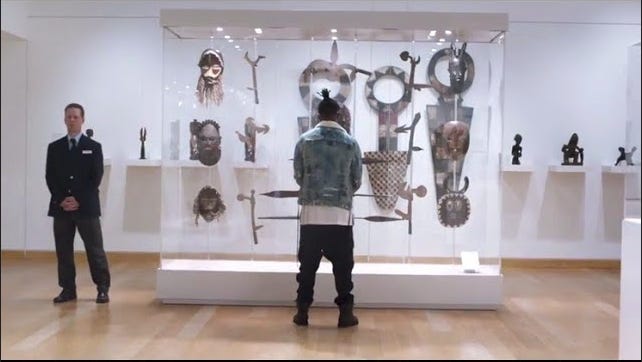
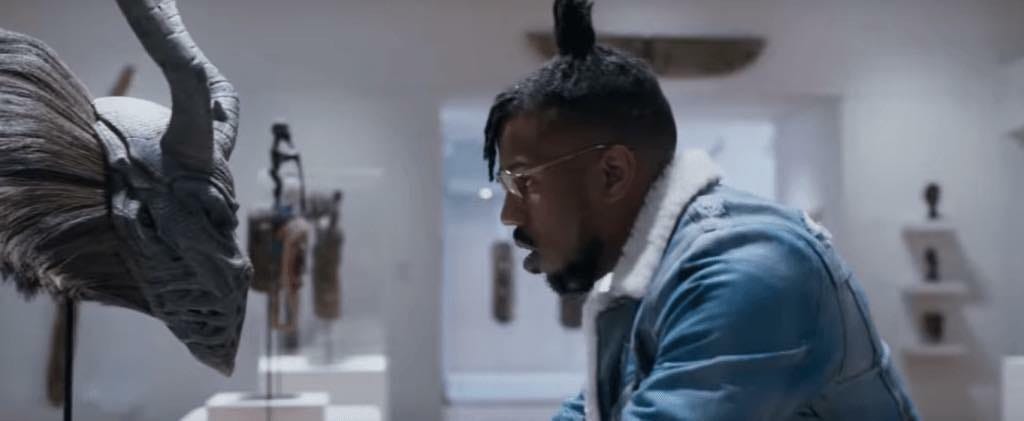
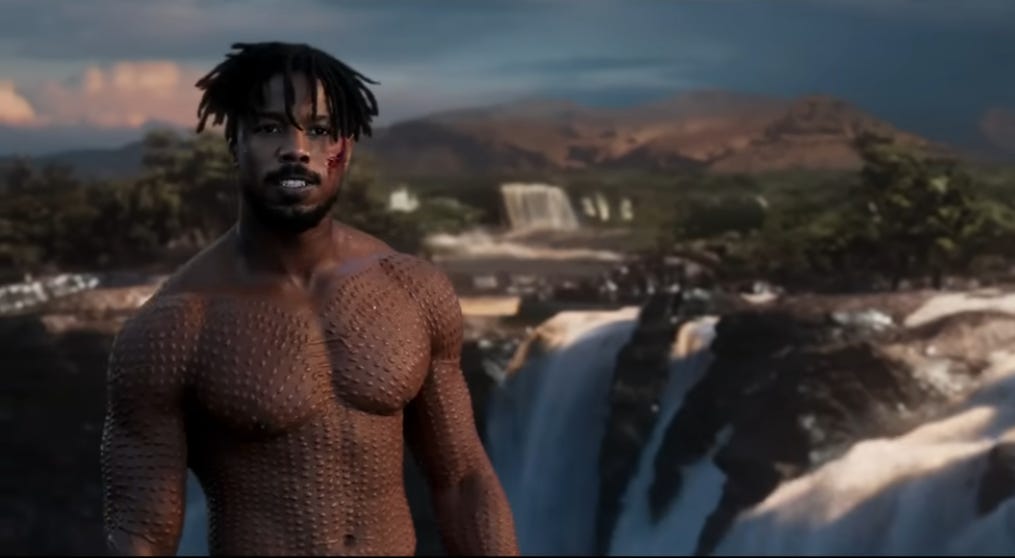
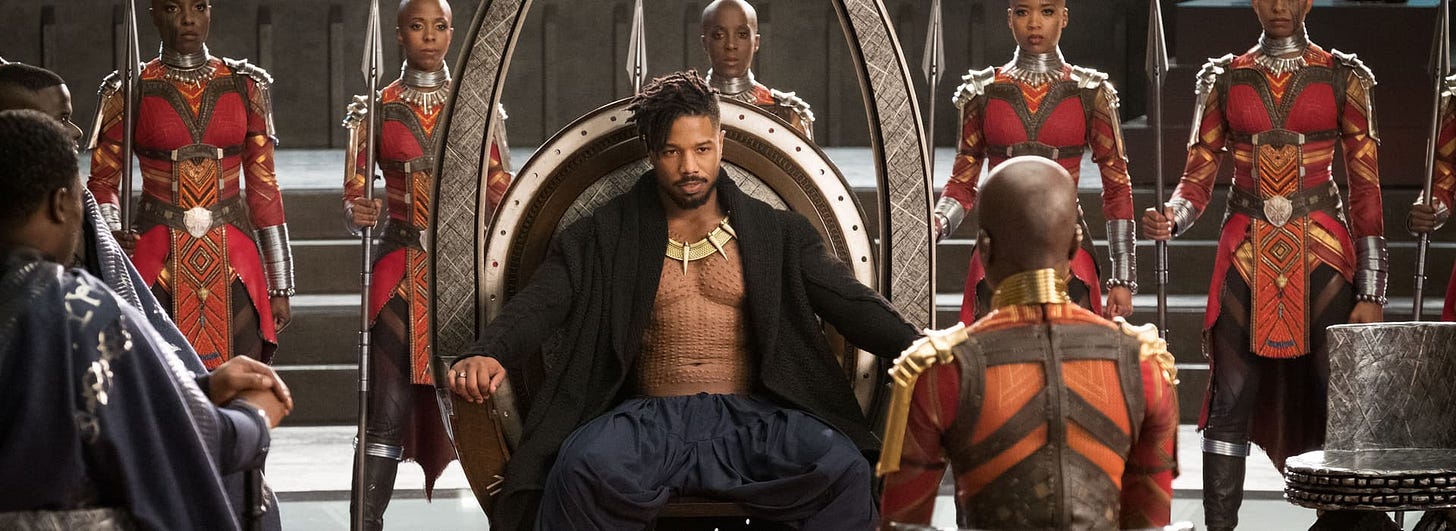
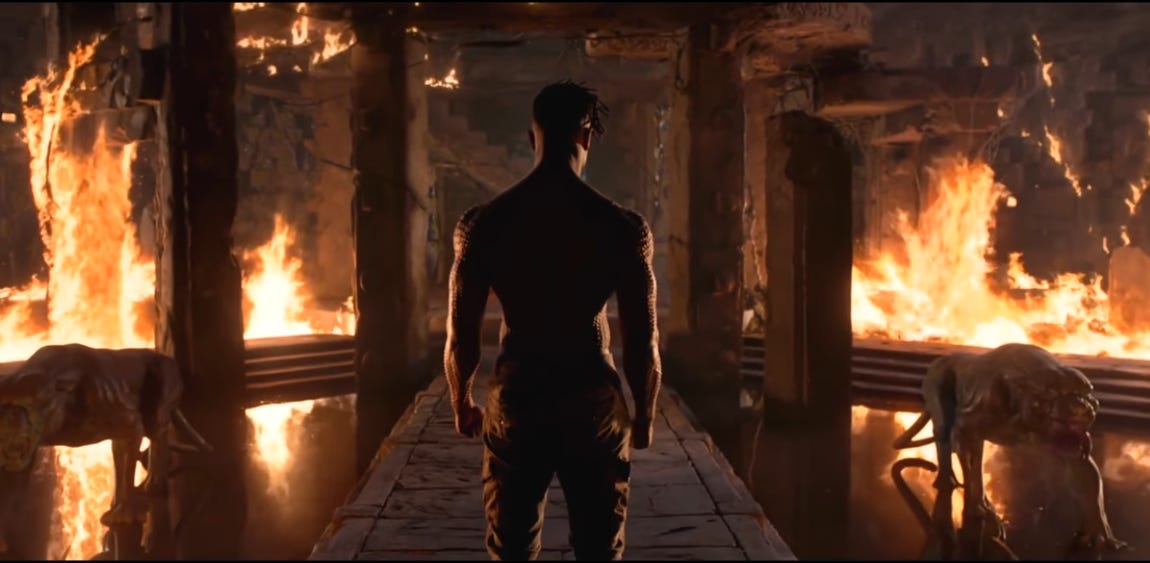
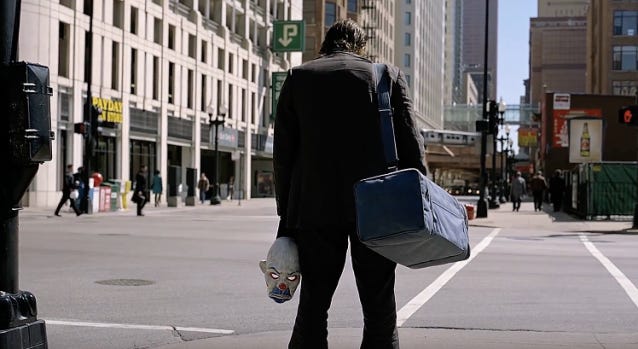
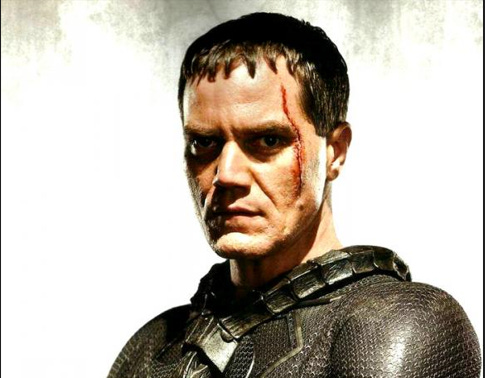
Intriguing, well written. You see clearly and it propels a consistent string of ideas to circulate in my head. You're a great writer for this accursed platform!
This was so good and well researched. I love a good "villain" in terms of how disruptive they are and how they challenge our acceptance of right and wrong.